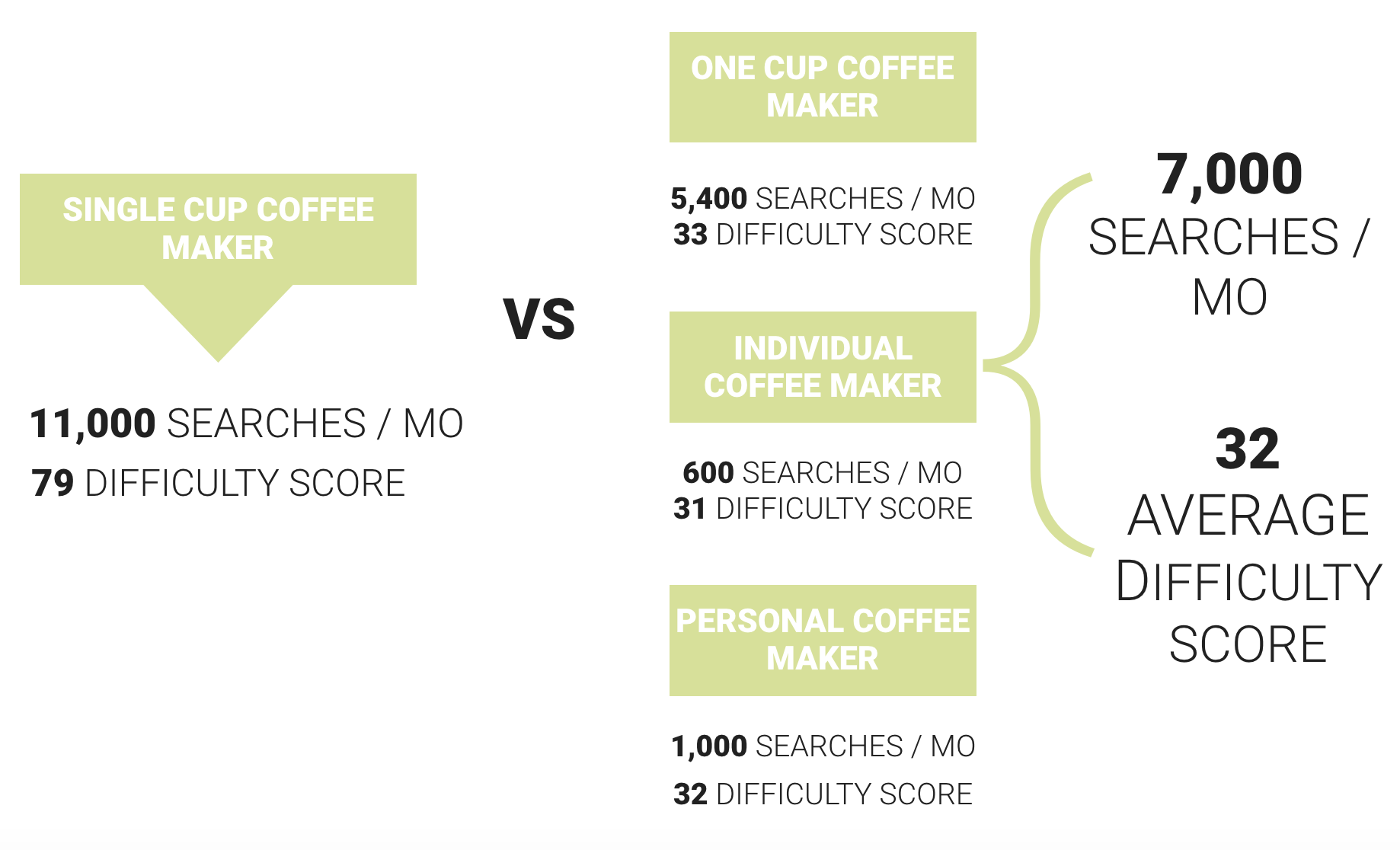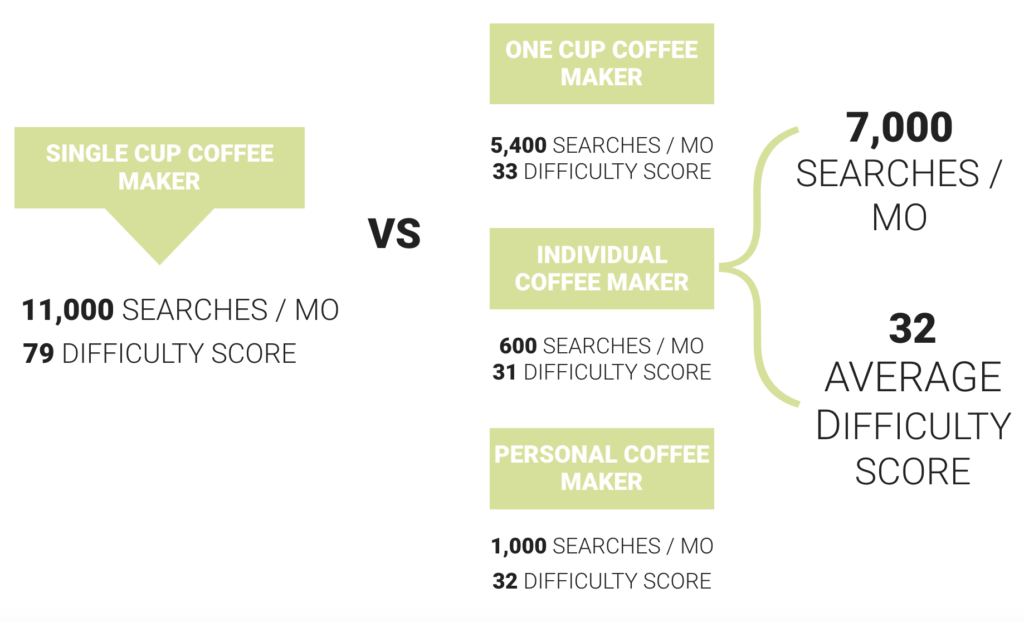A question we regularly come across in the search marketing space is “are we tracking enough keywords?” We hear this question from clients and colleagues across a variety of industries, job titles, and organization types. We decided to dedicate an episode of Found Friday to the question, because it is the basis for so many deeper content marketing and SEO issues.
In addition to tracking enough keywords, we also discuss whether we’re tracking the right keywords. Casting the widest net possible is bound to yield enough, but that may only serve to complicate things if they’re not part of the right net or can’t be segmented correctly. The amount of keywords you are tracking impacts things like what kind of SEO platform you decide to use, how you track campaigns, and your ability to measure goals and performance metrics.
There are many different factors to take into consideration when making the decision on how many and what type of keywords to track. Let’s take a look at some of the factors that can help you determine if you are tracking enough keywords.
How many keywords are “enough” for marketing?
This is a tough place to start, and during the episode we decide to tackle this question by examining deeper issues that lead back toward the answer. Often, what we find is that you don’t know what you don’t know, which is to say, maybe you don’t know what you could be tracking so you’re not.
A few things that we talk about tracking from a marketing perspective, each that have keywords and keyword groups associated, are:
- Products
- Features
- Campaigns
- Messages
- Industry
- Locations
- Brands
- Solutions
- Audiences
- Funnel / journey stage
Those are a few of what we can create additional keyword groups around inside of our marketing platforms to better track and analyze what’s going on in our ecosystem.
Speaking of the marketing ecosystem, let’s dive deeper into a few core areas we focus on in determining the right keywords.
Your audience and their needs
We know that we must understand our target audience and their needs. By looking at the segment examples we provided above, we are possibly expanding our audience, or the ways we reach them. That means we may discover more keywords, additional competitors, and new content opportunities for our marketing. Which is good news for content creators – whose number one complaint is new topics to write about and new content opportunities.
Here’s an example:
Previous keyword tracking centered around brand keywords such as products, features, and solutions. By adding campaign and messaging keywords, new competitors and content are surfaced as part of SERPs. The content that is performing well is different from the types of content previously tracked for you and your competitors. The newly tracked keywords and associated top performing content and competitors highlights a new opportunity in content type, channel or medium that is not in your current marketing mix.
If you segment your keywords and audiences in your platform, you’re able to quickly spot opportunities, get ahead of competitors, and serve more relevant content to targets.
Copywriting for people AND search engines
Saying that we write content for people and not search engines is a lie. By writing for people you ARE writing for search engines. And, according to changes deployed by Google, Amazon, and others in their findability algorithms, the converse of that should be true as well. The reason? Algorithms from all types of search engines are designed to deliver the most relevant content to a user at the time of the query.
So if you’re writing to answer the query and respecting the medium the query is created on and the intent behind the query – you are on the right track. Now comes in the “writing for search engines” part. You have to consider how the audience will potentially find your content and the ways they’ll ask their questions – which is how search engines will decide what’s relevant. So good practices mean not burying your main topic or points, forgetting formatting like H1 and H2 tags that tell both the reader and the search engine what they’re getting, etc.
Another part of pleasing everyone is paying attention to how long it takes to serve up your content. Google’s latest speed update is once again pointing out that there are the quick, and the dead (from a content perspective.)
How to find more keywords to track
The first step to finding more keywords is to take a step back from your business and understand it better. We refer to this as segmentation. Let’s use the example of a large fitness equipment manufacturer to work through this process. Begin with the top level areas of interest. This manufacturer makes equipment for yoga, boxing, martial arts, powerlifting, and weightlifting. Each of these are different product segments. Inside of each of these segments, you will want to consider intent and stage of the purchase process.
Let’s consider a power rack in the weightlifting segment. Is the searcher interested in a power rack for a home gym? A commercial gym? An office gym? Does it being made in the USA matter? Once you have a list of questions, you will want to determine demand volume for each. With this information, you can make informed decisions on what keywords are important to track.
Direct vs. indirect competition for keywords
The difference between direct and indirect competition for keywords is an important distinction to understand. Direct competition is pretty straightforward. These are the the direct sources of business competition for your product or service. Using our previous fitness equipment manufacturer as an example, a direct competitor would be any other manufacturer producing products in the same segments that you do.
Indirect competition for keywords can be a bit more difficult to determine. Let’s consider the weightlifting equipment segment. Indirect competition could be coming from review sites, sites with information on how to build a home gym, or sites with information on how to use the equipment the manufacturer produces. These sites are not competing at the business level, but they are competing for your target audience online. Once you understand your indirect competitors, it’s important to understand how they are creating content that is attracting your audience. It may also present opportunities. Because these competitors are not directly competing with you for business, it may be possible to turn them into an influencer. Using the previous power rack example, how could you get a website with how-to guides on how to create a home gym to talk about your power rack?
Desktop, mobile, and voice search queries
Search queries on mobile and desktop are often very different. More people are searching on mobile devices than ever before. Voice search is quickly gaining popularity and presents another variation on search queries. It is important to consider all these different possibilities when determining what keywords to track. Desktop search queries are often longer than mobile. Mobile queries often incorporate shortened versions of words or terms for the sake of brevity. Voice search queries tend to be far more conversational in nature than either desktop or mobile.
Something else to consider is that a given platform can yield very different search queries. For example, a mobile phone enables a searcher to search either through text or voice. A text search on a mobile device will likely be short and include abbreviated words or term. While a voice search will likely be much longer and more conversational than a text search. Considering all these different possibilities is important when determining if you are tracking enough keywords.
This is an area where really understanding your audience is important. Different audiences will have different preferences on platforms they use for search. The nature of queries can vary across different generations. Focus groups are a great way to gain insight into the different types of behavior in different audience segments. This is a tool that that pre-dates the digital world, but is gaining popularity again for good reason. One of the big reasons is that many businesses are expanding into new markets. They are finding that assumptions they were making for existing markets are not valid as they expand into new markets. The insights gained from focus groups are being leveraged in digital strategy with great results.
Preferred Landing Pages
Preferred landing pages are an important part of SEO strategy. After you’ve put a lot of effort and work into gathering a list of keywords to track, you’ll want to think about what type of content you want to rank for each of those keywords. Assigning specific content pages to specific keywords allows you to have deterministic control over what content is ranking for specific keywords. This is critical from both a traffic acquisition perspective and a conversion perspective. If the best content isn’t being served for a given keyword, there’s a good chance a searcher will visit your page and bounce, which is a lost opportunity.
If you find you don’t have relevant content pages for keywords you are tracking, this presents another opportunity. One option is to revisit your keywords and chose keywords that are more relevant to the content pages you do have. This effort focuses more on ensuring you are tracking the right keywords. The other option is to create new content that is a good fit for these keywords. Ensuring you have quality content for all your keywords is essential to attracting traffic and creating conversions.
Are you tracking enough keywords?
There is no right answer to the question of if you are tracking enough keywords. However, the factors explained above will all help you determine if you are. Thinking through the segmentation of your audience is a great place to start. From there you can consider all the relevant keywords for your various product or service offerings. Making sure that you are addressing the needs of your audience for each segment is important. You’ll also want to ensure you are considering all the variations in keywords. These variations can be influenced by device type, audience, and may other factors.
Once you’ve gathered your list of keywords. you will want to make sure you have quality content that fits well with each of these keywords. If you don’t, this may be a great opportunity to plan for the creation of new content that will fit these keywords. If you are still unsure if you are tracking enough keywords, contact us and we are happy to discuss.
Want to watch the latest episode of Found Friday, check it out below.
Sign up to hear about and attend future Found Friday webinars here.
Other keyword intelligence and tool blog posts:
https://demandsphere.com/blog/core-components-of-the-demandsphere-marketing-and-search-suite/
https://demandsphere.com/blog/demandsphere-comprehensive-suite-keyword-management-tools/

